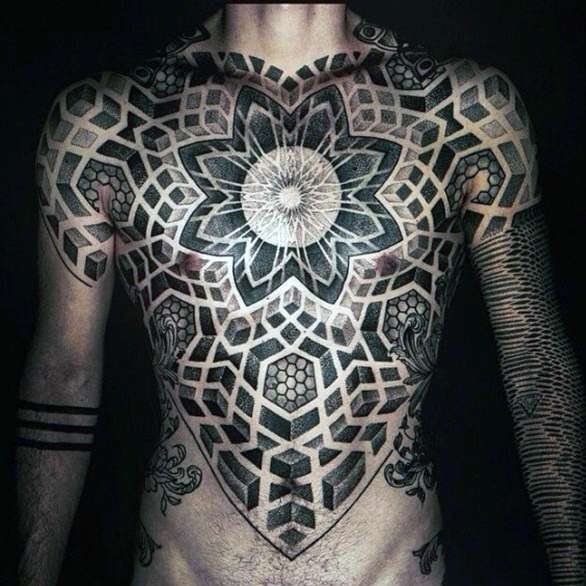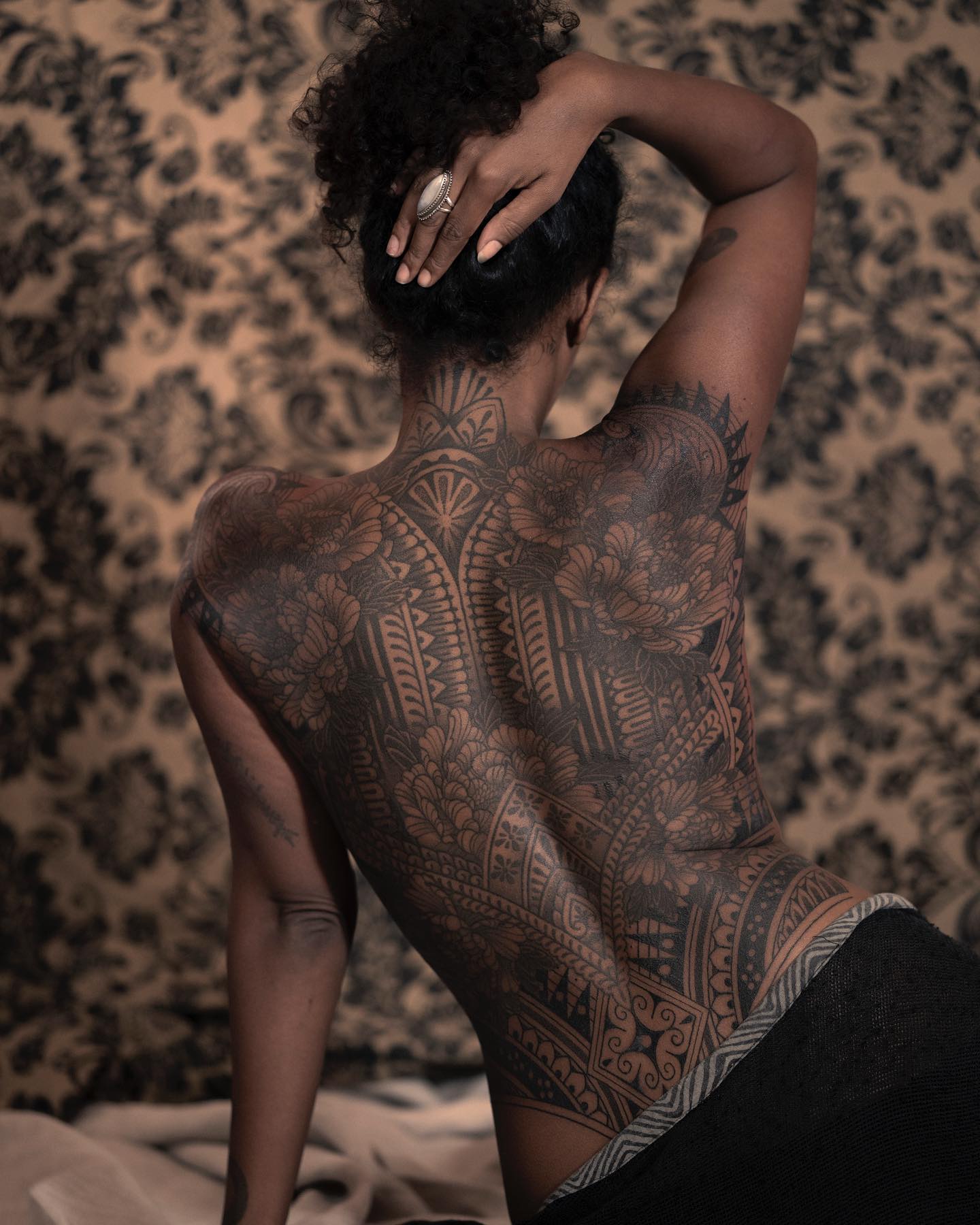
Style Guide: Ornamental Tattoo
Contents:
- Мanagement
- Styles
- ornamental

This ornamental tattoo guide takes a look at some of the more well-known styles of the genre.
- Ornamental tattoo is perhaps one of the oldest styles in the game.
- Unlike traditional tribal tattoos or heavy blackwork tattoos, ornamental tattoos tend to look and feel “fancyer”, more intricate and energetically “feminine”. They usually emphasize geometry, symmetry, and use black fills and/or subtle pointillism.
- Mehndi, patterns and decorative styles fall under the Ornament category.
- Mehndi
- DECORATIVE
- PATTERN WORK
Ornamental tattooing is arguably one of the oldest styles in the game - while the designs have crossed culturally throughout, many of their origins lie in ancient tribal traditions. The first evidence of human tattoos was found on the mummified corpse of a Neolithic Iceman discovered in the Alps in the early 1990s. He had 61 tattoos, most of which consisted of lines and dots, and most of them were found to be located on or near the acupuncture meridians, leading anthropologists to believe they had a healing role rather than an aesthetic one.
While this style of tattoo has become more of an aesthetic choice today, Smithsonian tattoo anthropologist Lars Krutak points out that while some indigenous people got tattoos purely for decorative purposes to enhance their appearance, this was the exception rather than the rule. In most cases, the tattoos were meant to represent tribal affiliation, hierarchy within a tribe, or, in the case of the Iceman, as medicinal therapy or to ward off evil spirits.
Although we already have separate style guides for Blackwork and Tribal tattoos, this article focuses on the specifics of modern ornamental tattooing. Ornamental tattoos can work when you don't necessarily want your tattoo to mean anything but just be pretty. Unlike traditional tribal tattoos or heavy blackwork designs, ornamental tattoos tend to look and feel "more whimsical", more intricate and energetically "feminine". They usually emphasize geometry, symmetry, and use black fills or subtle pointillism. They can also be designed with heavier bands of black, making them useful in "blastovers" (giving new life to an old tattoo that you may regret or no longer feel particularly like). However, there can be a fine line between cultural appropriation and acceptance, so it's best to come to a tattoo parlor with an idea, knowing where it came from and what it could mean in that culture, before tackling something forever.
Mehndi
Ironically, mehndi designs have become one of the most popular references to decorative style tattoos given that they were not traditionally inked permanently in the cultures they originate from. In the West, we call mehendi "henna". Practiced in Pakistan, India, Africa, and the Middle East for thousands of years, this art form originated as a remedy, as a paste derived from the henna plant had soothing and cooling properties. Practitioners found that the paste left a temporary stain on the skin, and it became a decorative practice. Nowadays, you will still see these temporary tattoos, traditionally applied to the arms and legs, worn mostly on festive occasions such as weddings or birthdays. Designs often include mandala motifs as well as decorative patterns borrowed from nature. Given their dainty, sophisticated aesthetic, it's no surprise that these designs have made their way into modern tattoo culture, where you'll see them not only on arms and legs, but sometimes even in large-scale work, such as arm or leg sleeves or parts of the back. Dino Valleli, Helen Hitori and Savannah Collin have created some great mehndi pieces.
DECORATIVE
An ornamental tattoo is not limited to mehndi designs; inspiration also often comes from folk art. Ornamentation in a decorative style may take the form of a more traditional craft such as crochet, lace, or wood carving. An example of this, and an unlikely source of inspiration for modern ornamental tattooing, is Croatian folk art, which used thick lines and dots combined with Christian and pagan design elements. The patterns usually included crosses and other ancient decorative forms, streams and objects on the hands, fingers, chest and forehead, sometimes around the wrist to look like bracelets. See Bloom's work in Paris for more subtle examples of this work, or Haivarasly or Crass Adornment for a heavier hand.
PATTERN WORK
Patterned tattoos are usually more geometric than ornamental tattoos, which are based on more organic shapes. As such, they may seem bolder than these other styles and more suited to blackwork, where there is more emphasis on sharp edges and clean, repeating shapes. While you can also see mehndi-influenced design elements in these tattoos, you will often see them set against the backdrop of shapes such as circles, hexagons, or pentagons laid out in a grid pattern. Tattoo artists such as Raimundo Ramirez from Brazil or Jono from Salem, Massachusetts often use patterns in their designs.
This should give you food for thought when contemplating your decorative tattoo - as we said, it can mean so many things and so many artists today combine elements from different cultures and traditions in their own unique style.
Article: Mandy Brownholtz
Cover image: Dino Valleli
Leave a Reply